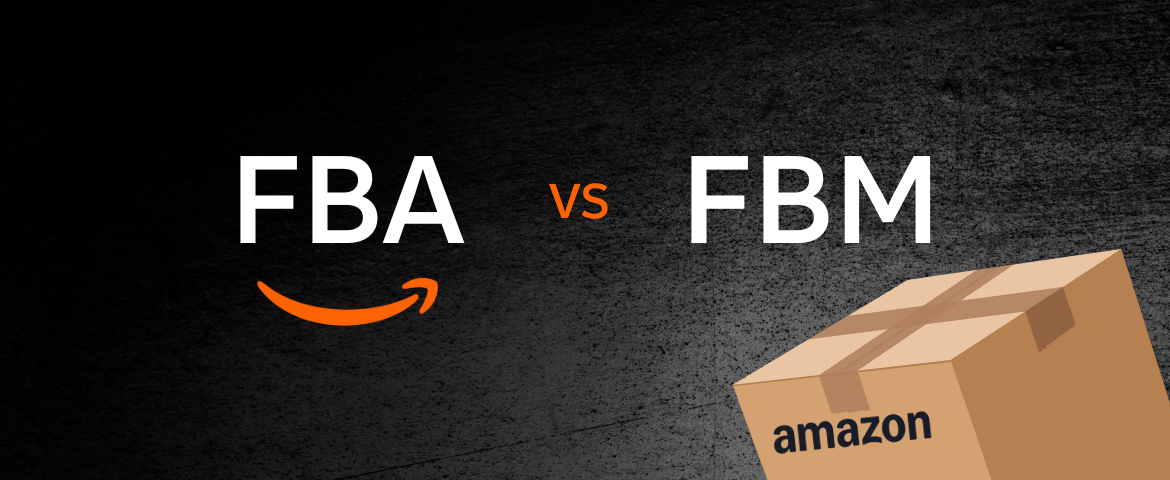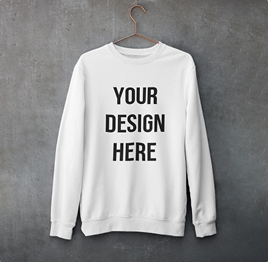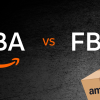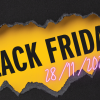FBA vs FBM: Which One Works Better for POD Sellers?

When you start selling on Amazon, one of the biggest decisions you’ll face as a POD (Print-on-Demand) seller is choosing your fulfillment method. The two main options are FBA (Fulfillment by Amazon) and FBM (Fulfillment by Merchant).
Each option comes with its own pros and cons – from costs and brand control, to customer experience and overall profit margin.
In this article, we’ll break down both FBA and FBM in detail, especially from a POD seller’s perspective, so you can decide which model fits your business best.
What is FBA (Fulfillment by Amazon)?
Fulfillment by Amazon (FBA) is a service provided by Amazon that allows sellers to store their products in Amazon’s fulfillment centres. Once an order is placed, Amazon takes care of everything – picking, packing, shipping, customer service, and returns.
In short, with FBA, you just focus on product sourcing, marketing, and sending your stock to Amazon’s warehouse. Amazon handles the rest for you.
How FBA works for POD sellers
For POD sellers, the FBA process works a bit differently. Since POD products are only printed after an order is made, you can’t send blank inventory to Amazon. Instead, the process looks like this:
- Produce a small batch first: Identify your best-selling designs (for example, popular t-shirts) and have a small quantity printed with your supplier.
- Send to Amazon warehouse: After printing and labelling according to Amazon’s requirements, send your stock to Amazon’s fulfillment centres.
- Amazon stores and delivers: When a customer buys from your store, Amazon will immediately ship it out on your behalf.
Advantages of FBA for POD sellers
- Prime badge & faster shipping: FBA products automatically qualify for Amazon Prime, meaning Prime customers enjoy free two-day delivery. This is a huge advantage that helps boost conversion rates.
- Better chance at winning the Buy Box: Amazon’s algorithm tends to favour FBA listings, making it easier for you to secure the “Add to Cart” or “Buy Now” button.
- Save time & effort: Amazon handles all the logistics – warehousing, packing, delivery, customer support, and returns — freeing you up to focus on marketing and product creation.
- Reach Amazon’s global customer base: You’ll benefit from Amazon’s trusted brand and massive buyer network.
- Simplified international shipping: With FBA Export, Amazon can deliver your products to over 100 countries without you needing to deal with customs paperwork.
Disadvantages of FBA for POD sellers
- Inventory risk: You need to pre-produce your stock, which goes against the “on-demand” nature of POD. If your designs don’t sell, you might end up with unsold inventory.
- High and complex fees: FBA fees include storage, fulfillment, return handling, and other costs – all of which can add up quickly.
- Strict packaging rules: Amazon has specific standards for labelling and packing. Not following them can lead to extra costs or shipment rejection.
- Limited brand experience: Amazon ships products in Amazon-branded boxes, so you lose the chance to create a custom unboxing experience.
- Harder to control product quality: Since Amazon handles fulfillment, you won’t be able to personally check each order before it’s shipped.
What is FBM (Fulfillment by Merchant)?
Fulfillment by Merchant (FBM), also known as MFN (Merchant Fulfilled Network), means you manage your own fulfillment — from storing and packing to shipping and customer service.
Your Amazon store acts as a sales platform, while you (or your fulfillment partner) handle the backend operations.
How FBM works for POD sellers
FBM matches perfectly with the nature of POD. Here’s how it usually works:
- Upload your product listings: Create your product mockups and publish them on Amazon.
- Receive customer orders: Once a customer buys, you receive the order details.
- Forward order to your POD supplier: Send the design, product info, and shipping details to your partner.
- Production & delivery: The supplier prints, packs, and ships the product directly to your customer, under your brand name.
- Customer service: You update tracking numbers and handle any customer inquiries.
Advantages of FBM for POD sellers
- No inventory risk: You only produce when there’s an order – no wasted stock or upfront capital.
- Full brand control: You can customise your packaging, inserts, and thank-you cards to build your brand image.
- Higher profit margin: With no FBA fees, you keep more profit per sale.
- Flexible operations: You’re not tied to Amazon’s strict storage or packing rules.
- Closer customer connection: Managing your own customer service lets you understand buyers better and improve your products.
Disadvantages of FBM for POD sellers
- More work to handle: You’ll need to track orders, update shipping info, and deal with customer issues – which can become time-consuming as you scale.
- Slower delivery times: Without Prime, your shipping speed depends on your logistics partner.
- No Prime badge: Your listings may appear less appealing compared to FBA listings.
- Harder to win the Buy Box: Amazon tends to prioritise FBA sellers.
- Full responsibility for customer support: You must maintain Amazon’s customer service standards to avoid account issues.
FBA vs FBM Comparison
| Criteria | FBA (Fulfillment by Amazon) | FBM (Fulfillment by Merchant) |
|---|---|---|
| Process | Automated – handled by Amazon | Managed by seller or 3PL |
| Shipping Speed | Fast (2–3 days with Prime) | Depends on your courier |
| Service Fees | Higher – includes storage & handling | Lower – production & delivery only |
| Brand Control | Limited | Full control over branding |
| Inventory | Pre-printed, carries stock risk | Print-on-demand, no stock risk |
| POD Compatibility | Less suitable | Very suitable |
| Customer Experience | Excellent with Amazon service | Varies with your fulfillment partner |
| Profit Margin | Lower | Higher |
| Scalability | Easier to scale | Needs strong system to grow |
So, Which Is Better for POD Sellers?
There’s no one “best” answer it depends on your goals, business size, and stage of growth.
When to choose FBM
For most POD sellers, especially beginners, FBM is the more practical and safer option.
- Starting out: With limited capital and no sales data yet, FBM lets you test designs without worrying about unsold stock.
- Focusing on brand building: FBM gives you full control over your packaging and communication perfect for creating a consistent brand experience.
- Selling niche products: If you’re targeting smaller markets or steady sales, FBM helps keep operations simple and costs low.
- Maximising profit margin: You’ll earn more per sale since there are fewer fees involved.
When to consider FBA
Once you’ve grown your business and identified your top-performing products, FBA can be a smart move.
- For your hero products: Send small batches of proven best-sellers to FBA to boost visibility and sales.
- During peak seasons: For periods like Black Friday, Cyber Monday, or Christmas, FBA’s fast delivery can make a big difference.
- To scale faster: If you’re tired of handling operations manually, outsourcing fulfillment to Amazon can save a lot of time.
Hybrid Strategy: Combining Both
Many successful POD sellers adopt a hybrid approach using both FBA and FBM together.
- FBM for your entire product range to test new designs and sell niche items without risk.
- FBA for your top-sellers to enjoy Prime shipping benefits and higher conversion rates.
This way, you get the flexibility of POD while still leveraging Amazon’s fulfillment power to maximise your profit.
Final Thoughts
Choosing between FBA and FBM affects more than just your logistics – it shapes your customer experience, brand identity, and long-term profitability.
FBA gives you convenience, credibility, and speed. FBM gives you flexibility, control, and higher margins.
The smart way is to understand both, use them strategically according to your business stage, and work with a reliable fulfillment partner so you can scale your POD business sustainably in the ever-competitive Amazon marketplace.








